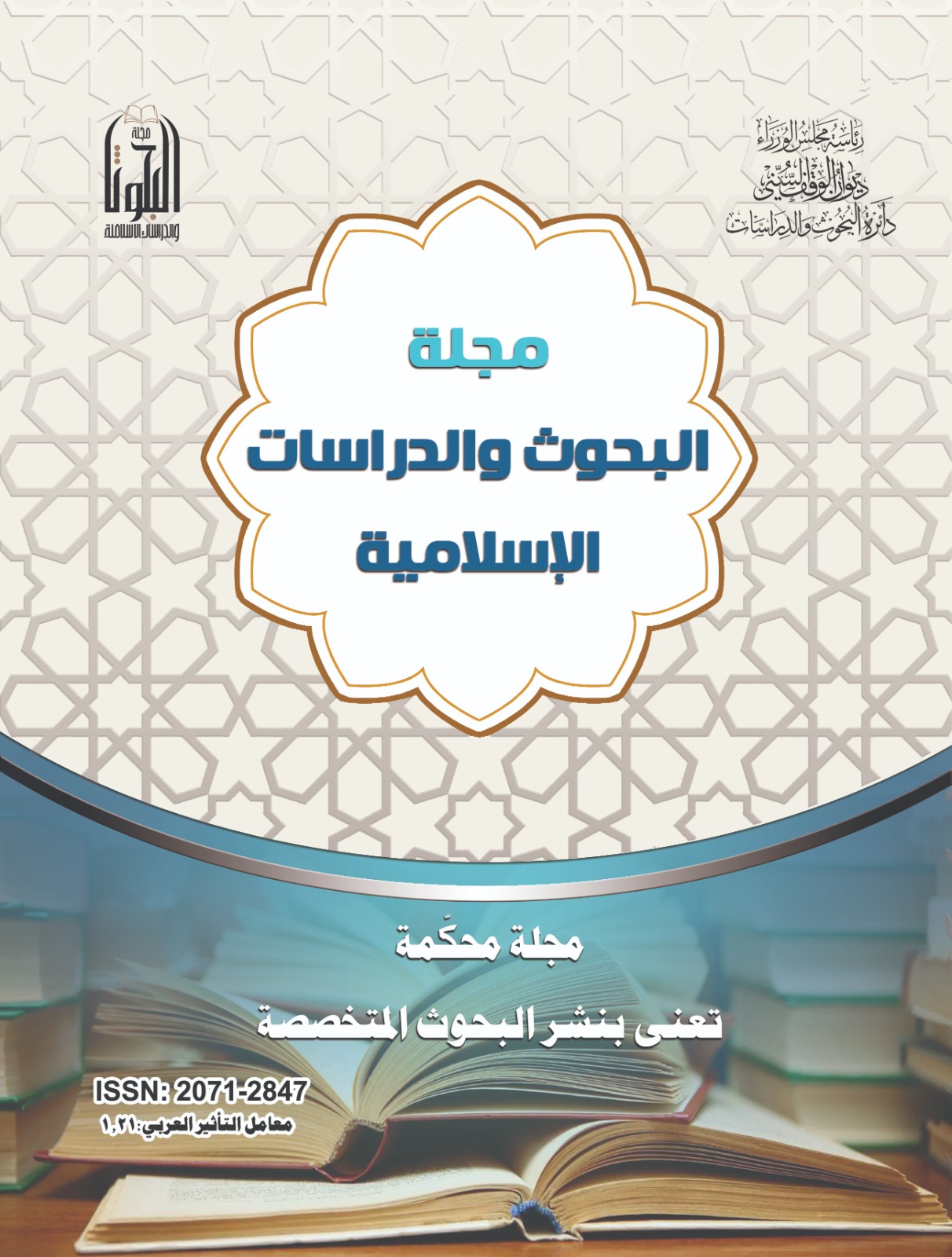Abstract
This study aims to analyze the rhythm and its artistic beauty, as highlighted by numerous critics who recognized the effectiveness of rhythm in creating a poetic text of high literary quality. The research examines this feature through one of the criteria of modern criticism—phonetic cohesion, which refers to the poet's ability to employ language in a way that achieves complete harmony between the poem’s words and the rhythm of its sounds, ultimately enhancing meaning.The study adopts an inductive-analytical approach, investigating phonetic cohesion at two levels: Metrical structure, focusing on prosody, meter, and rhyme. Phonetic phenomena, such as sound density, repetition, and other phonetic features that reflect the poet's emotional intensity and contribute to the poem’s imagery.The findings reveal the poet’s skill in constructing a cohesive rhythmic structure, governing the poem’s fabric through external rhythm (meter and rhyme) and internal rhythm (syntactic and lexical arrangement, including repetition and antithesis). This phonetic cohesion played a crucial role in the success of the poetic experience.The poem exhibits a harmonious phonetic cohesion across its verses, aligning perfectly with its themes. This cohesion grants the poem artistic and rhythmic value, captivating the reader’s mind through a rich array of linguistic and phonetic techniques. These elements create a powerful, dynamic rhythm and an emotional melody that encapsulates the poet’s experience, reinforcing its impact on the audience.
Keywords
Al-Hussein bin Mutair.
Phonetic consistency
Abstract
يَهدفُ البحثُ إلى دراسةِ الإيقاعِ وبيانِ جمالهِ الفنِّيِّ الذي نادى به كثيرٌ من النُّقادِ الذين أَدركوا فاعليةَ الإيقاعِ في خلق نصٍ يرتقي إلى مستوى الشِّعريةِ. وقد نظرَ البحثُ إلى هذه السِّمةِ عبر معيارٍ من معاييرِ النَّقدِ الحديثِ، وهو الاتساقُ الصوتيُّ وما يعنيهِ من قدرةِ الشَّاعر على توظيفِ لغتهِ بما يحقِّقُ الانسجامَ التام بين ألفاظِ القصيدةِ وإيقاع أصواتِها، وأثرُ ذلك في إيضاحِ المعنى. وقد اتبعتِ الدراسةُ المنهجَ الاستقرائيّ التَّحليليّ، وقد تم ذلك عبر دراسةِ الاتِّساقِ الصَّوتي في البنيةِ العروضيةِ القائمةِ على الوزن والقافية، والاتساقِ الصَّوتي في الظواهرِ الصوتية مثل كثافةِ الأصواتِ وظاهرةِ التكرار، وغيرِها من المظاهر الصوتية التي تفصحُ عن درجةِ انفعال الشاعر، وبالتالي تساعدُ في بناء المشهدِ التصويريّ.
وقد كشفَ البحثُ عن براعةِ الشاعرِ في تكوين بنيةٍ إيقاعيَّةٍ متناسقةٍ حكمت نسيجَ القصيدةِ، إذ توزعت على محورين: اتساقٌ في البنية الإيقاعية الخارجية ، واتساقٌ في الإيقاعِ الداخلي المنبثقِ عن نسج العبارة وترتيبِ الكلماتِ، كما في فنيّ التكرار والطباق، وقد أسهمَ هذا الاتساقُ الصوتيُّ في نجاحِ هذه التجربةِ الشعريةِ.
الخلاصة: ضَمَّتِ القصيدةُ اتساقًا صوتيًا توزَّعَ على امتداد أبياتها، وامتازَ بانسجامهِ التَّامِّ مع ما تحمله من أفكارٍ، وقد وسمها هذا الاتساقُ بقيمةٍ فنيةٍ وإيقاعيةٍ استطاعت أن تجذبَ ذهن المتلقي عن طريق حشد أساليبٍ لغويةٍ وصوتيةٍ رسمت إيقاعًا صاخبًا ولحنًا عاطفيا أطَّر تجربةَ الشاعرِ.
وقد كشفَ البحثُ عن براعةِ الشاعرِ في تكوين بنيةٍ إيقاعيَّةٍ متناسقةٍ حكمت نسيجَ القصيدةِ، إذ توزعت على محورين: اتساقٌ في البنية الإيقاعية الخارجية ، واتساقٌ في الإيقاعِ الداخلي المنبثقِ عن نسج العبارة وترتيبِ الكلماتِ، كما في فنيّ التكرار والطباق، وقد أسهمَ هذا الاتساقُ الصوتيُّ في نجاحِ هذه التجربةِ الشعريةِ.
الخلاصة: ضَمَّتِ القصيدةُ اتساقًا صوتيًا توزَّعَ على امتداد أبياتها، وامتازَ بانسجامهِ التَّامِّ مع ما تحمله من أفكارٍ، وقد وسمها هذا الاتساقُ بقيمةٍ فنيةٍ وإيقاعيةٍ استطاعت أن تجذبَ ذهن المتلقي عن طريق حشد أساليبٍ لغويةٍ وصوتيةٍ رسمت إيقاعًا صاخبًا ولحنًا عاطفيا أطَّر تجربةَ الشاعرِ.
Keywords
الاتساق الصَّوتي، الحسين بن مطير.
